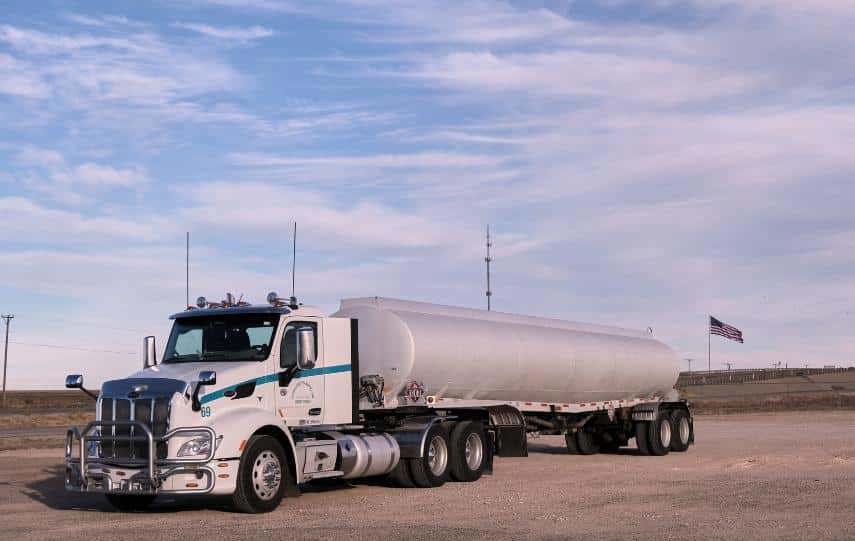
In-transit inventory is a frequently overlooked aspect of inventory management and accounting for product businesses. We break down what it is, how to calculate its value, plus a few tricks for smarter management of in-transit goods.
What is in-transit inventory?
In-transit inventory is products that have been shipped by the seller but have yet to reach the customer. These goods are also called goods-in-transit, pipeline inventory, or transportation inventory.
In B2B, in-transit inventory typically refers to products that are on their way from a wholesaler to an eCommerce retailer. In B2C, it refers to products that are on their way from the merchant’s warehouse to the final customer.
 In-transit inventory refers to goods that have left the merchant and are on their way to the recipient.
In-transit inventory refers to goods that have left the merchant and are on their way to the recipient.
Who owns in-transit inventory?
Ownership of in-transit inventory would be rather ambiguous without pre-determined shipping policies.
As such, who the goods belong to is normally determined by the terms and conditions of the shipping agreement between the selling party and the buying party or stated in the seller’s shipping policy.
Let’s quickly cover a few of the more common scenarios.
Freight-on-Board (FOB) Shipping
In a FOB Shipping agreement, in-transit inventory is owned by the buyer as soon as the products are loaded onto the ship.
FOB Destination
In a FOB Destination agreement, in-transit inventory is owned by the seller until it arrives at the buyer’s destination.
Cost, Insurance and Freight (CIF)
In a CIF agreement, the seller pays for shipping costs, insurance, and freight and therefore owns any in-transit inventory until it arrives at the destination port, at which time ownership transfers to the buyer.
eCommerce
In most cases, eCommerce merchants have ownership of any in-transit inventory until it reaches the end customer. Some eCommerce retailers may opt for different terms which ought to be included in their shipping policy.
In-transit inventory accounting
Accounting for in-transit inventory can be tricky, as it requires knowledge of multiple relevant factors.
First, you must determine the ownership status of the goods being transported (see above). Next, you’ll need to calculate the average value of a shipment, the average cost of transportation, and your carrying cost.
The average shipment value per day can be determined using this formula:
Cost of Goods X Carrying Cost / 365 = Average Shipment Value Per Day
So, if the carrying cost was 15% and the average inventory shipment value was $500 then the formula would be: 500 X 0.15 / 365 = $0.21 per day
In-transit inventory formula
Once we’ve worked out the average daily value of a shipment, we can use this to determine the cost of transportation.
The cost of transportation can be calculated using this formula:
Average Shipment Value Per Day X Number of Days in Transit = Cost of Transportation
Let’s say an item was in transit for 30 days. Using our example above, that would look like: 0.21 X 30 = 6.3
In this example, the cost of transportation equals $6.30 per shipment.
Finally, add this cost to your average inventory shipment to arrive at the total cost of your in-transit inventory.
So, 6.3 + 500 = $506.30.
 The cost of transporting goods can affect how you manage your in-transit inventory.
The cost of transporting goods can affect how you manage your in-transit inventory.
7 tips for efficient in-transit inventory management
In-transit inventory needs to be treated as sold (but not delivered) stock.
And that means it needs to be accurately recorded and managed just like the products that are still sitting in your storage facility.
Below are our best tips for managing your in-transit inventory.
Take out shipping insurance
It’s essential to have a proper contingency plan in place in case something happens to your in-transit inventory. In many cases, this means taking out insurance on deliveries.
In-transit inventory insurance typically gives you coverage for losses or damages caused by:
- Theft
- Vehicle accidents
- Natural disasters
- Accidental damages
- Fire
- Lost goods
Although it comes at an extra cost (you still have to pay the premium even if you never make a claim), shipping insurance is considered a wise choice – especially for businesses shipping high-value goods.
Research multiple insurance companies and get quotes to determine the best option for your company.
Invest in robust inventory management software
Tracking customer orders, updating stock levels, and completing assemblies are just three of the menial tasks you can automate with inventory management software.
When you implement a powerful inventory system like Unleashed (check demo), you’ll be able to better track your in-transit inventory and calculate transportation costs.
Inventory management software also helps you:
- Synchronise sales across multiple channels
- Get up-to-date reports detailing the quantities, locations, and values of your stock on hand
- Track serial numbers or batches for full visibility across a product’s journey
- Create, track, recost, and manage purchase orders
Join Unleashed today and get a free 14-day trial for your business.
Integrate your disparate systems
If all your sales and inventory data is spread across multiple systems, you’re going to have a tough time building an accurate picture that encompasses everything.
When procuring software and equipment, consider how well they will integrate with one another.
For example, you may wish to find inventory management software that naturally integrates with your sales channels, shipping software, barcoding system, and accounting software.
This way, you can ensure accurate numbers and make better-informed decisions based on real historic data from all areas of your business.
 Cloud-based software that integrates with other systems can help improve the accuracy of your in-transit inventory levels.
Cloud-based software that integrates with other systems can help improve the accuracy of your in-transit inventory levels.
Review and update your shipping policy
Often when a business is starting out the owner will rush to quickly get all the right policies in place in time for the official launch.
Unfortunately, this means that the terms and conditions of many shipping policies can be outdated and even lead to lawsuits if an especially discerning customer decides to nit-pick.
Review your current shipping policy. Does it mention ownership of in-transit inventory?
If not, you’ll need to add it. Or, if you intend to get shipping insurance but your policy states that in-transit inventory is owned by the customer, you’ll need to update your policies.
Prioritise clear communication
Managing expectations throughout the supply chain plays a massive role in reducing product returns and customer support tickets.
Try to give your customers as much detail as possible about the status of their order. If it’s possible, have this information accessible online so that you can reduce the number of emails in your inbox.
Customers want to know:
- The status of their order
- The location of their order
- How long they can expect to wait for their order
- Who is delivering their order
- The status of the delivery
- If pick-up options are available
- The courier tracking number for their order
- What to do if their order never arrives
If you can give your customers all of this information via a few clicks of their mouse, they’ll be much happier to wait a few extra days should you suffer any disruptions.
Likewise, building a good rapport with your suppliers can help you give accurate answers to some of the queries we just mentioned. Work with suppliers to implement end-to-end supply chain product traceability.
Speak with an accountant
If you’re not confident with how you’re accounting for in-transit goods, you will likely benefit from speaking to a professional accountant or financial advisor.
Accountants aren’t just there to file your tax returns. Many will also offer advice and recommendations for how you record and manage your accounts, as well as useful information about developing and sustaining your business.
Even if you aren’t ready to put one on the payroll, it’s worth setting up a consultation to make sure you’ve got all the best practices in place.
Audit your inventory
Different products come with different transportation costs.
When analysing your in-transit inventory, you might discover that some items are in fact losing you money based on how long they take and how much they cost to deliver.
Regular audits of your product portfolio will help you identify which items will need to be culled (or given a new transport method) so that your financials remain healthy.
